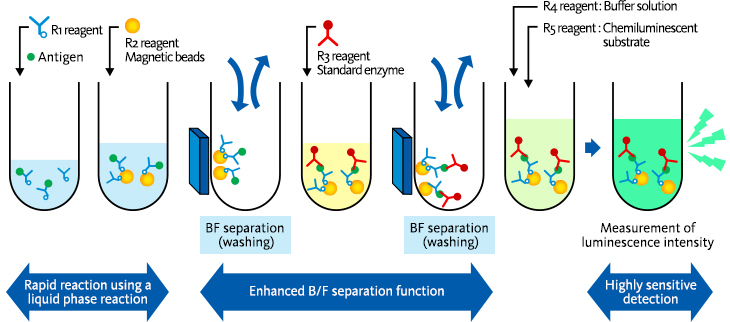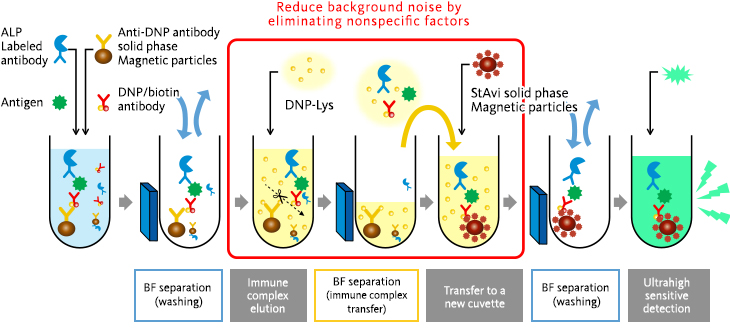Sysmex’s Technologies
Protein Measurement Technologies
We are working on technologies to detect proteins in blood and urine at high speeds and with a high degree of precision, and further extend testing parameters.
Sysmex’s Protein measurement technology : Chemiluminescence Enzyme Immunoassay
Using chemiluminescence enzyme immunoassay methodology as a measurement principle, reagents for the HISCL® automated immunoassay system conduct an initial antigen-antibody reaction in the liquid phase, and then use B/F separation to optimize magnetism collection, washing and agitation, realizing antigen-antibody reactions efficiently in a short period of time.
Using the alkaline phosphatase (ALP) labeled enzyme, combined with CDP-Star® for strong indication of luminescence intensity and a chemiluminescent substrate allows highly sensitive measurement with small sample volumes (10–30μL/test).
Using the alkaline phosphatase (ALP) labeled enzyme, combined with CDP-Star® for strong indication of luminescence intensity and a chemiluminescent substrate allows highly sensitive measurement with small sample volumes (10–30μL/test).

Current Protein Measurement Technologies
●Ultrahigh Sensitive Immunoassay System
Numerous nonspecific adsorption factors can hinder efforts to achieve high sensitivity in immunoassay.
In particular, the non-specific adsorption of labeled antibodies onto cuvettes and other solid surfaces is known to result in background noise.
With this system, only the substances to be measured are sandwiched between antibodies in an immune complex and transferred to other magnetic beads, thereby reducing non-specific background noise to around 1/100th.
This complicated immune complex transfer process can be achieved using existing systems (HISCL®).
For HBsAg, we achieve high levels of sensitivity approximately 60 times that of existing systems (HISCL®).
Going forward, we will consider ways of increasing the sensitivity of numerous immune measurement parameters.
■Principles of Ultrahigh Sensitive HISCL®

For HBsAg measurement, high sensitivity approximately 60 times that of HISCL®

